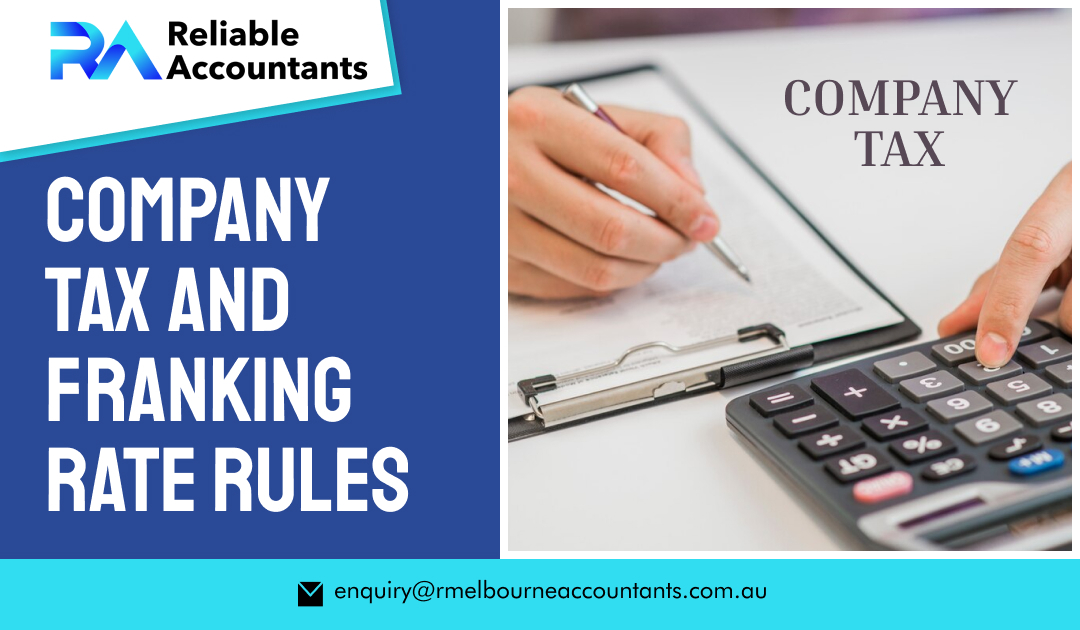From the 2018 tax year forward, a company’s tax rate is determined by whether it is classed as a base rate entity for that year. If this is the case, a lower tax rate will apply.
If a corporation meets the following criteria, it will be classified as a base rate entity:
- Its current income year’s total yearly turnover is less than the relevant level (which is $50 million for the years 2019 through 2022).
- “Base rate entity passive income” cannot exceed 80% of its assessable income for the year.
The following types of income are included in base rate entity passive income:
- Franking Credits
- Non-Share Dividends
- Dividends, Except Non-Portfolio Dividends
- Royalties
- Interest
- Net Capital Gains
- Rent
- Gains on Qualifying Securities
- Income is obtained from a partnership or trust to the degree that it is preferable to the partnership’s or trust’s base rate entity passive income.
In LCR 2019/5, the ATO provides some clarification on the meaning of these terms.
Dividends are classified as passive income depending on who received them and what percentage of the company they came from. This is because a dividend paid to a corporation that owns at least 10% of the voting stock in the company delivering the dividend should be recognised as a non-portfolio dividend and not as passive income. However, regardless of the shareholding percentage, if the dividend is given to a trust, it should be classified as passive income.
While interest is usually considered passive income, there are a few exceptions, which are listed below:
- If the entity is a financial institution (as defined by section 202A of the Assessment Act)
- Financial Sector Act 2001 where the entity considers as the registered entity that carries on providing finance’s general business on a commercial basis.
- If the entity has an Australian credit licence (as defined by the National Consumer Credit Protection Act 2009) or is a credit representative (as defined by that Act) of another entity that has an Australian credit licence.
- When the entity is a financial services licensee (Corporations Act 2001) whose licence covers dealings in financial products listed in paragraph 764A(1)(a) of that Act (securities), or when the entity is an authorised representative (section 761A of that Act) of such a financial services licensee.
- If the entity is a specific type of entity as defined by a legislative instrument.
MAXIMUM FRANKING RATE
From the 2018 income year onwards, while computing a company’s utmost franking rate, you must consider the tax rate that would apply in the current year if the following assumptions were made:
- The total revenue, assessable income, and passive income of the company in the current year are the same as the previous year.
FUTURE INCOME YEARS
While the corporate tax rate for base rate entities has been cut in recent years, BREs will be subject to a 25% rate beginning July 1, 2021.
Many businesses will have considerable franking account balances that have built up over time and will, in many cases, reflect tax paid at a 30% rate. It is crucial for these businesses to consider how these credits might be used effectively.
Previously, one method was deferring dividend payments to take advantage of the current year’s franking rate before the corporate tax reductions in the next years. This should no longer be the case because the company’s tax rate should remain at 25% as long as it is designated as a base rate passive business.
Excess franking credits can also be attached to tax-sheltered income or gain amounts when they are given to shareholders. This could include distributions of the following items:
- Income is protected by capital works deductions or other deductions under Division 43.
- Amounts received by the corporation as a cash flow boost from the ATO.
- Division 152 ITAA 1997 provides for a 50% active asset reduction level under the small business CGT exemptions.
- Pre-CGT gains.
In most situations, such amounts would be taxed to shareholders as an unfranked dividend if distributed, but in other cases, section 47 ITAA 1936 may permit these amounts to be paid out as a capital return for tax purposes provided certain conditions are met.
Another method that may work in some situations is to wait until a company is sold or shut down before handing out dividends. However, it is vital to keep in mind that there will usually be a gap between the moment a company stops operating and when it may pay out 30 percent dividends.
Other Useful Links:-
Tax Agent Melbourne
Small Business Accountant Near Me
Accounting Services

